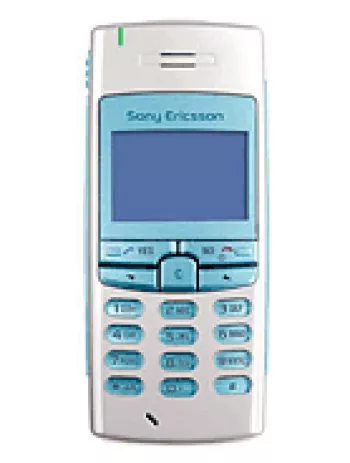Sony Ericsson txt pro Full Specs Pricing & Insights

Design and Build Quality
The Sony Ericsson txt pro is housed in a compact and durable design, measuring 93 x 52 x 18 mm and weighing just 100 grams. Its form factor is ergonomic, providing a comfortable grip that makes texting and prolonged uses easier and more enjoyable. The device sports a sliding QWERTY keyboard, an advantageous feature for users who are keen on typing accuracy and speed. The mini-SIM slot indicates a straightforward approach to connectivity during its time. Available in black, white, and pink, it appealed to a variety of aesthetic preferences.
Display
The 3.0-inch TFT display might seem modest by today’s standards, but with 256K colors and a 240 x 400-pixel resolution, it delivers sharp and vivid visuals for its time. The display occupies approximately 53% of the body front, providing users with a reasonable screen-to-body ratio. Scratch-resistant glass protects the screen against abrasions, adding durability to daily use. Although the pixel density stands at 155 ppi, it was sufficient for basic phone functions, browsing, and enjoying multimedia.
Platform and Performance
The device is powered by the PNX-4910 CPU, which drives the feature phone’s essential operations. The Sony Ericsson txt pro belongs to the feature phone category, offering users straightforward functionality without the complexity of a smartphone. While it lacks the app ecosystem of Android or iOS, it’s designed to efficiently handle essential tasks. The memory options, with 100MB of internal storage and a 64MB RAM, are minimal, but adequate given the device's intended use. For users needing more space, the inclusion of a microSDHC card slot allowed for expanded storage capabilities.
Camera
Equipped with a single 3.15 MP main camera, the Sony Ericsson txt pro captures basic photographs suitable for personal use and social media sharing. It records video at 320p, which, while not high-definition, allows for recording simple clips. The handset lacks a front-facing camera, reflecting the device’s focus on text and communication over multimedia capabilities.
Battery and Power Efficiency
This phone is powered by a removable Li-Ion 1000 mAh battery, which suits the low power demands of its hardware. Users can expect up to 400 hours of standby time or up to 5 hours and 10 minutes of talk time. Such battery performance is sufficient for users who prioritize calls and messaging over heavy media consumption or app usage.
Network and Connectivity
On the network front, the Sony Ericsson txt pro supports GSM technology, compatible with bands 850, 900, 1800, and 1900 MHz. GPRS and EDGE offer internet connectivity speeds up to 85.6 kbps and 236.8 kbps, respectively, suitable for basic browsing and data applications of the time.
Connectivity features include Wi-Fi 802.11 b/g, Bluetooth 2.1 with A2DP for stereo audio devices, and a microUSB 2.0 port. Noticeably, the device does not support GPS positioning but does come with stereo FM radio with RDS for listening to over-the-air broadcasts.
Sound and Media
The Sony Ericsson txt pro includes a loudspeaker and a 3.5mm audio jack, offering convenience for users who frequently use headsets. The sound quality caters to basic listening needs, enabling users to enjoy music and calls without significant distortion or loss of clarity.
Miscellaneous Features
Sensors like accelerometers aid in orientation adjustments, while proximity sensors are designed to manage screen use during calls. The built-in browser supports WAP 2.0/xHTML and HTML, giving users limited but effective web browsing capabilities suitable for a feature phone. Additionally, messaging options extend to SMS with a threaded view, MMS, Email, and Instant Messaging, maintaining connectivity across various platforms.
User Experience
The Sony Ericsson txt pro was built with a focus on communication. Its sliding QWERTY keyboard provided users with a tactile typing experience that remains satisfying, especially for those fond of physical keyboards. The feature phone operating system lacked the app diversity found in contemporary smartphones but was beloved by users who prioritize simplicity and efficiency.
Market Impact and Legacy
Released in 2011 and discontinued shortly afterwards, the Sony Ericsson txt pro targeted users seeking reliable communication devices at a budget-friendly price point. Priced around 80 euros, it was an affordable option. Its presence in the market represents a bridge between traditional mobile phones and the rising smartphone trend, appealing to a segment intent on textual communication without the complexities of a smartphone.
Key Features of Sony Ericsson txt pro
- Compact dimensions and lightweight, only 100 g (3.53 oz).
- QWERTY keyboard for easy typing.
- Scratch-resistant glass for display protection.
- Wi-Fi 802.11 b/g for internet connectivity.
- Stereo FM radio with RDS for music and news.
- Bluetooth 2.1, A2DP for wireless audio.
- Expandable storage via microSDHC card slot.
- 3.15 MP main camera for basic photography.
- Removable Li-Ion 1000 mAh battery ensuring up to 400 hours of standby time.
- Available in three colors: Black, White, Pink.
- Affordable price at around 80 EUR.
Disadvantages of Sony Ericsson txt pro
- Network limitation to only GSM, no support for 3G or 4G.
- Low processing power with the PNX-4910 CPU.
- Limited internal storage of 100MB with only 64MB RAM.
- Low resolution display with only 240 x 400 pixels.
- Basic camera capabilities with a single 3.15 MP camera and 320p video recording.
- No front-facing selfie camera.
- No GPS or positioning features available.
- Discontinued status, limiting support and parts availability.
- Limited battery capacity with only a 1000 mAh removable battery.
- Older Bluetooth version 2.1.





















View Also
More Phones
All Rights Reserved +13924 Phones © Mobilawy 2025

























